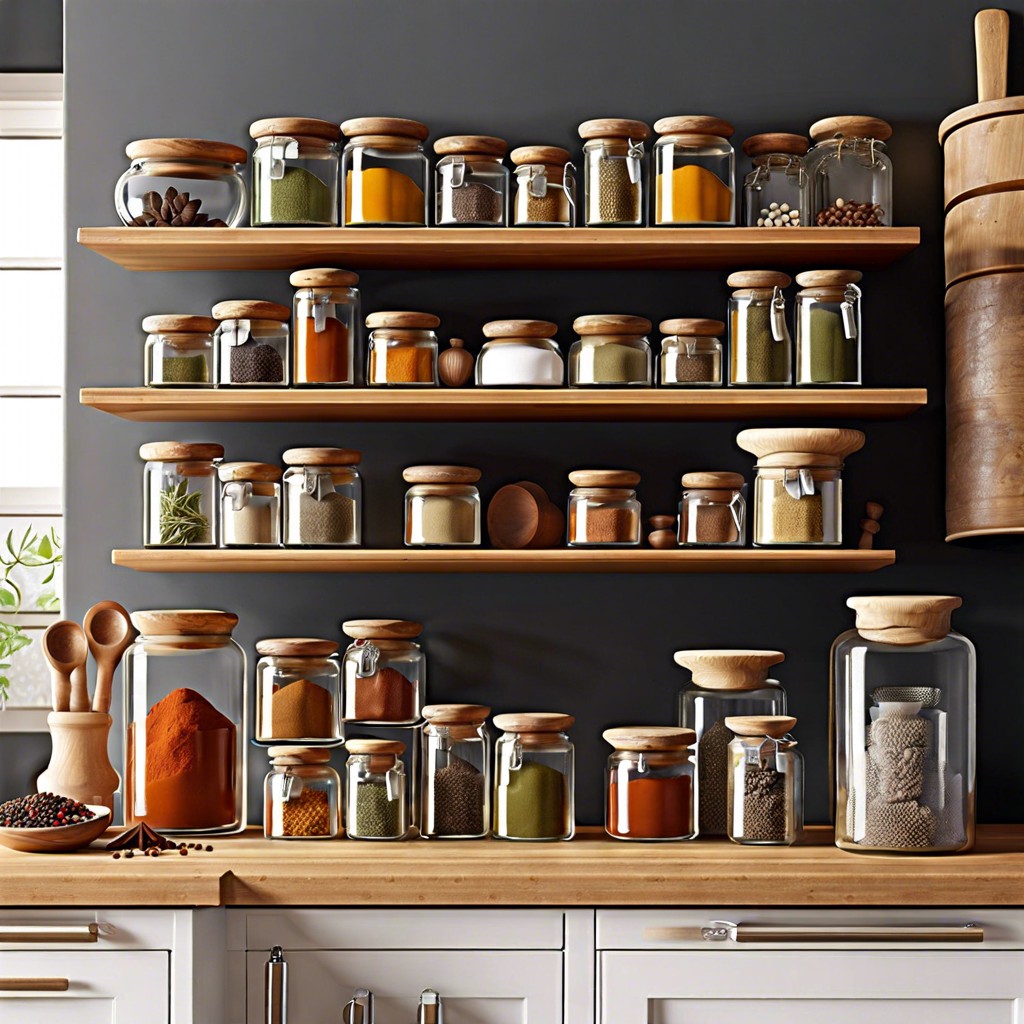Last updated on
This article explains what a spice kitchen is and why it might be a practical addition to your home.
Key takeaways:
- A spice kitchen is a separate cooking area for managing strong flavors and aromas.
- Key features include separate space, high-power ventilation, easy-to-clean surfaces, closed cabinetry, and advanced heating solutions.
- Benefits include containing strong odors, enhancing property value, and providing an organized cooking area.
- Design considerations include practical space planning, efficient storage, easy-to-clean materials, and sufficient lighting.
- Ventilation is crucial for maintaining a comfortable and safe environment in a spice kitchen.
What's Inside
Definition of a Spice Kitchen

A spice kitchen, often referred to as a secondary or prep kitchen, is a small, separate cooking area within a home where strong flavors and aromas are managed. This kitchen is typically equipped with its own ventilation system to handle the intense smells and smoke that can come from frying and seasoning foods. It’s especially popular in homes where aromatic dishes are frequently prepared, keeping the main kitchen free of persistent odors and grease buildup.
Key features include additional stove tops, ovens, and sometimes a smaller refrigerator or sink, mirroring the setup of a primary kitchen but on a scaled-down level. This setup is invaluable for those who entertain often or cook large batches of food that require significant prep work away from the main living spaces.
Essential Features of a Spice Kitchen
A spice kitchen, often a secondary kitchen, is equipped to handle the heavy-duty cooking of aromatic and spicy foods. This specialized space is designed to keep strong odors contained and away from the main living areas. Here are a few key features:
**Separate Space:** Typically located away from the main kitchen, it may be adjacent or even in a different part of the house, like a basement or a utility area.
**High-Power Ventilation:** A robust exhaust system is vital to whisk away smoke and pungent smells. This might include high-quality range hoods or additional ventilation options.
**Easy-to-Clean Surfaces:** Non-porous materials such as stainless steel or engineered quartz are common for countertops and backsplashes since they resist stains and odors.
**Closed Cabinetry:** Dense cabinetry helps in containing spices’ strong fragrances within the space, maintaining the freshness of the main kitchen area.
**Advanced Heating Solutions:** Higher BTU burners are common to accommodate the intense heat needed for cooking diverse recipes.
By integrating these features, a spice kitchen ensures a practical and enjoyable cooking experience for dishes that are full of flavor and zest.
Benefits of Having a Spice Kitchen
A spice kitchen can transform your home cooking experience. One notable advantage is the containment of strong odors. Cooks can experiment with aromatic spices and pungent ingredients without worrying about the scents spreading to other areas of the home. This aspect is particularly appealing for those who love to prepare diverse cuisines that heavily utilize garlic, onion, and exotic spices.
Besides keeping your main kitchen pristine, a spice kitchen greatly enhances property value. Homebuyers often view an additional, specialized cooking area as a luxury that sets your property apart. It offers potential buyers the enticing prospect of hosting large gatherings and preparing elaborate meals without disrupting the functionality of the everyday living space.
Lastly, owning a spice kitchen provides an organized, dedicated area for more intense cooking ventures. This means all your spices, specialized utensils, and extra cookware are conveniently stored away from the main kitchen, reducing clutter and streamlining both cooking and cleanup processes. This organization can notably ease the stress of meal prep, especially when dealing with complex dishes. In essence, a spice kitchen acts as both a functional and enjoyable upgrade to your cooking and entertaining lifestyle.
Designing an Efficient Spice Kitchen Layout
Good design starts with practicality, especially in a spice kitchen. Space planning is crucial to accommodate diverse cooking styles that involve spices. First, consider the placement of appliances and counter space. Align these elements to create an efficient workflow. For example, place the stove close to the prep area to minimize the need to carry hot pots across the room.
Storage is another critical aspect. Opt for deep drawers and shelving units to store pots, pans, and spice containers. Transparent containers or labels can help quickly identify contents, speeding up the cooking process.
Also, consider easy-to-clean materials. Spice-laden cooking can be messy. Stainless steel countertops and glass backsplashes reduce scrub time and maintain hygiene.
Lastly, incorporate sufficient lighting. Under-cabinet lights or a well-placed pendant can illuminate the workspace, making it safer and more enjoyable to cook.
Ventilation Considerations in Spice Kitchens
Proper ventilation is pivotal for maintaining a comfortable and safe environment in a spice kitchen. High-powered fans or a range hood are ideal means to expel strong odors and keep indoor air quality fresh. Positioning of these fans near the cooking surface will maximize their effectiveness in capturing fumes right at the source.
Cracking a window or integrating an air purifier can supplement these systems, especially in tightly sealed spaces. For those who love to infuse dishes with robust spices, ensuring efficient airflow will keep the aromatic intensity within the kitchen without permeating other areas of the home. Lastly, regular maintenance of your ventilation systems extends their lifespan and keeps them working efficiently in dealing with the vigorous culinary activities typical of a spice kitchen.




